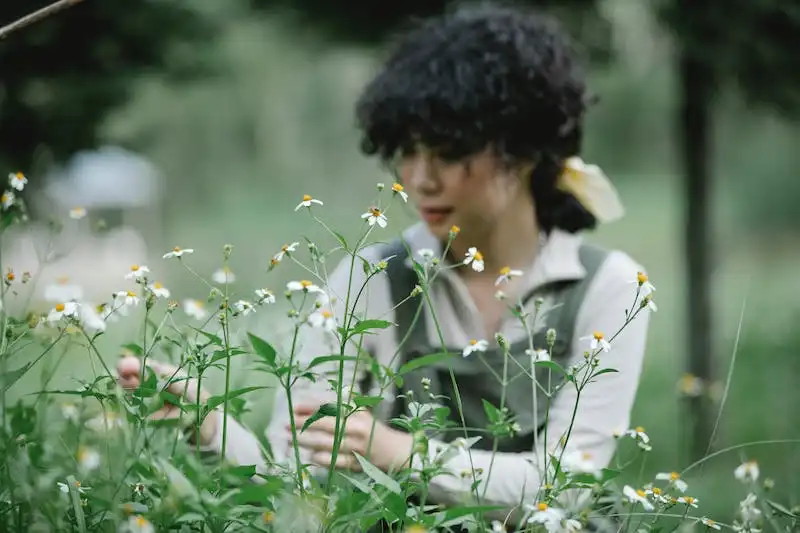Dracaenas are a popular variety of houseplants that are known for their attractive foliage and easy care. With their origins in Africa, these plants have made their way into homes all over the world. If you’re a new plant owner or looking to add a new member to your plant family, the Dracaena is a great choice!
When it comes to watering, it’s important to note that these plants prefer well-drained soil. It’s best to wait until the soil is dry to the touch before watering again. However, be careful not to overwater, as this can lead to root rot and other issues. If you’re unsure whether your Dracaena needs water or not, it’s always better to underwater than to overwater.
Pruning is another important step in Dracaena care. This helps the plant stay healthy and encourages new growth. If you notice any brown or yellow leaves, carefully prune them off. It’s also a good idea to prune any stems that have become too long or leggy. Just be sure to use clean and sharp pruning shears to avoid damaging the plant.
Dracaenas are generally tolerant plants that can handle a variety of conditions, but they do have some preferences. They thrive in bright, indirect light, so be sure to place them in a spot where they can get plenty of natural light. They can tolerate lower light levels, but too much shade can cause the plant to become leggy and weak.
One common issue that Dracaena owners may encounter is pests. These plants can attract bugs such as spider mites and mealybugs. If you notice any signs of pests, it’s important to act quickly to prevent further infestation. You can use a mild insecticidal soap or a neem oil solution to help get rid of the bugs. Just be sure to follow the instructions carefully and avoid applying the solution directly to the leaves.
In conclusion, caring for a Dracaena is not too difficult, as long as you pay attention to their specific needs. With proper watering, pruning, and protection from pests, your Dracaena plant can thrive and add a touch of green to your home.
Dracaena Plant Irrigation Guide: Learn When To Water Dracaenas
Proper irrigation is essential for the health and well-being of your Dracaena plant. These popular indoor plants prefer loose, well-draining soil, so it’s important to ensure that they’re not sitting in water for long periods of time.
When it comes to watering your Dracaena, it’s best to follow the “finger test”. Simply stick your finger about an inch into the soil and check for moisture. If the top inch of the soil feels dry, it’s time to water your plant. However, if it still feels slightly damp, you can wait a bit longer before the next watering.
Dracaenas are susceptible to overwatering, which can lead to root rot, so it’s better to underwater than to overwater. If you’re unsure, it’s always safer to wait a little longer between waterings. Additionally, it’s important to note that Dracaenas don’t appreciate being placed in overly humid environments, so be cautious when choosing their location.
Some common symptoms of overwatering include yellowing leaves, brown spots, and a leggy or drooping appearance. On the other hand, underwatering can cause the leaves to turn brown and dry out. So, it’s important to strike a balance and provide your Dracaena with the proper amount of moisture.
Here are some additional tips for keeping your Dracaenas healthy:
- Make sure to prune your Dracaena regularly to promote growth and a better overall appearance.
- Dracaenas are toxic to pets, so be cautious and keep them out of reach.
- These plants prefer bright, filtered light but can also tolerate lower light conditions.
- Choose a balanced fertilizer and apply it according to the instructions once every couple of months.
- Check the soil moisture regularly to avoid overwatering or underwatering.
- If your Dracaena is growing too tall and leggy, consider taking it down and propagating a new plant from the cuttings.
- When choosing a Dracaena variety, note that some, like the cornstalk or the marginata, are more picky when it comes to their light and humidity requirements.
In summary, it’s best to water your Dracaena plants when the top inch of soil feels dry, while also being cautious not to overwater. Regularly checking the soil moisture, choosing the right location, and properly pruning the plant will help keep your Dracaenas healthy and thriving.
Dracaena Water Requirements
When it comes to caring for dracaenas, watering is an essential aspect of their care. To give you a summary, here are the water requirements you’ll want to keep in mind:
- Water your dracaenas thoroughly, but not too often. They prefer to be slightly dry between waterings.
- Make sure the pot has good drainage to avoid overwatering. If the water sits in the pot, it can lead to root rot.
- Choose a larger pot with drainage holes, especially if you have a larger dracaena variety, as they often have more extensive root systems.
- Water your dracaenas with distilled or filtered water if possible. Tap water may contain chlorine or other chemicals that can harm the plants.
- If you notice that the tips of the leaves are turning brown or the plant starts to look leggy, it may be a sign that you need to adjust your watering routine.
- When watering, pour water directly into the soil, avoiding the leaves. Watering the leaves can increase the risk of pests and diseases.
- Dracaenas prefer bright, indirect light, so placing them near a window is often a good choice. However, be cautious of placing them directly in sunny windows, as they can get burned.
- Check the specific humidity requirements of the dracaena variety you have. Some dracaenas, like the Dracaena fragrans variety, are less tolerant of low humidity.
- If you’re unsure when to water, a general guideline is to water when the top inch of the soil feels dry to the touch.
- Finally, keep in mind that dracaenas are generally considered pet-friendly plants. However, it’s always better to double-check if the specific species you have can be safely kept around pets.
By following these guidelines, you can ensure that your dracaenas receive the right amount of water and thrive in your indoor space.
How to care for a Dracaena
Dracaena plants are popular indoor plants that can adapt to a wide range of conditions. To care for a Dracaena plant, it’s important to thoroughly understand its needs and provide the right conditions for it to thrive.
One of the key factors in caring for a Dracaena plant is to provide the right level of humidity. Dracaenas prefer moderate humidity, so it’s important to keep the air around the plant well-humidified. In dry indoor environments, misting the leaves or placing the plant near a humidifier can help maintain adequate humidity levels.
Fertilizing is also crucial for Dracaena plant owners. These plants should be fed with a balanced fertilizer every two to four weeks during the growing season. Be careful not to over-fertilize, as this can cause the tips of the leaves to turn brown. Always follow the instructions on the fertilizer packaging and dilute it to the recommended strength before applying it to the plant.
Repotting is another important aspect of Dracaena care. On average, Dracaenas should be repotted every two to three years, or when the plant has outgrown its current pot. When repotting, be sure to use a well-draining potting mix to prevent waterlogging the roots.
Dracaena marginata, one of the most popular Dracaena species, prefers bright but indirect light. Placing it near a window where it can get some filtered light is ideal. However, avoid exposing the plant to direct sunlight, as this can scorch the leaves.
Pruning is necessary to keep Dracaenas looking their best. Remove any yellow or brown leaves as soon as you notice them. Regularly trimming the foliage can also help shape the plant and maintain its desired form. Additionally, propagating Dracaenas is relatively easy, and a great way to fill your home with more of these beautiful plants.
In summary, caring for a Dracaena involves ensuring it is in a location with the right light conditions, providing adequate humidity, watering it carefully to avoid overwatering, fertilizing it regularly, repotting when necessary, and pruning to maintain its shape and remove any unhealthy foliage. So, if you want to enjoy the beauty of Dracaenas in your home, follow this care guide to keep them thriving!
Watering
Watering is an essential part of caring for dracaena plants. Understanding the correct watering technique can help ensure the health and longevity of your plant. Here are some tips to keep in mind:
1. Frequency: Dracaena plants, including the popular Dracaena fragrans variety, do not like to be overwatered. They prefer to be watered thoroughly but infrequently. Water your dracaenas every 1-2 weeks, allowing the soil to dry out between waterings.
2. Watering amount: When watering your dracaenas, make sure to provide enough water to thoroughly saturate the soil. Water until you see water coming out of the drainage holes at the bottom of the pot. This ensures that the entire root system is adequately hydrated.
3. Water quality: Dracaena plants are not picky about the type of water they receive. Tap water is usually sufficient, but if you live in an area with hard water or high mineral content, using distilled or filtered water is a good idea to prevent the build-up of minerals in the soil.
4. Temperature and humidity: Dracaenas prefer temperatures between 60-75°F (15-24°C). Keep them away from drafts or extreme temperature fluctuations. Dracaenas also thrive in high humidity, so misting the leaves or placing a tray of water nearby can help increase humidity levels.
5. Drainage: It’s crucial to have well-draining soil for dracaenas to prevent root rot. Ensure your pot has drainage holes at the bottom, and use a well-draining potting mix to allow excess water to escape.
6. Outdoor care: If you are growing your dracaena outdoors, make sure it is placed in a shady or partially sunny area. Direct sunlight can scorch the leaves, leading to brown spots or burnt edges.
7. Pruning: Regular pruning helps maintain the shape and size of your dracaena plant. Remove any dead, yellow, or brown leaves and trim overgrown stems. This will keep your dracaena looking neat and healthy.
8. Repotting: Dracaenas generally do well in the same pot for several years. However, if your plant has outgrown its container or if the soil is not draining well, consider repotting it. Repotting should be done during the spring or early summer.
By following these watering tips and caring for your dracaenas with specific attention to their moisture requirements, you can enjoy lush and thriving plants. Just remember to water carefully, monitor humidity levels, and provide necessary TLC. Happy gardening!




